In Mouth to Stoma Rescue Breathing the First Aider Should
Give rescue breaths by gently breathing into their mouth. Activate EMS as soon as its determined the victim is unresponsive b.
An alternative method is to use a CPR breathing barrier.
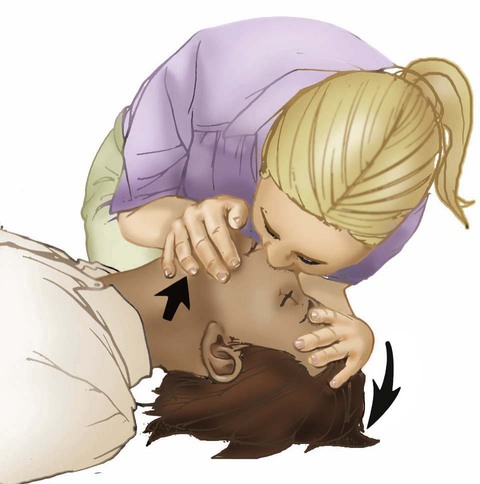
. Stay with the victim until someone else arrives c. Infants up to age 1. In mouth to stoma rescue breathing the firsts aider should.
The rescuer should attempt to seal the patients mouth as best as possible and apply ventilations to the victims nose. It may sound odd but not only. Give the first rescue breath lasting one second and watch to see if the chest rises.
Use an AED d. Start with 2 rescue breaths. This is about 10 to 12 breaths per minute.
If it does rise give the second breath. Tightly close the victims mouth and nose with one hand. Open the air away by the jaw-thrust method B.
It is useless to try mouth-to-mouth breathing in any indi-vidual who breathes through an opening in the neck. This is a serious surgical procedure and should never be attempted as a first aid procedure by a layperson. If alone with an unresponsive child or infant victim the rescuer should.
Escuers should However r consider using a barrier device if. Place your mouth directly over the stoma and form an airtight seal. In neck breathers ventilation and oxygen administration is done through the stoma mouth to stoma Figure 9 left or using a mask infanttoddler or adult turned through 900 Figure 9 right.
This is a popular myth that. This technique should be used on casualties that are not breathing but still have signs of circulation. Rescue breathing sometimes called artificial resuscitation is a way of breathing air into someone to give the person the oxygen needed to survive.
What is mouth to mouth mouth to nose and mouth to stoma. Close the victims mouth and nose and breathe through the opening of the neck. You might feel uncomfortable with the thought of giving mouth-to-stoma rescue breaths.
Mouth to stoma should be used where a person has had a laryngectomy. Adults and children age 1 to puberty. Provide care for 2 minutes then activate the EMS system d.
Remember Do No Further Harm - if you are unsure or you. It is much too dangerous despite what we might see on television. Home How it Works.
Open the airway by the head tilt chin lift method. Resuscitation Barrier Devices-these barrier devices provide the first aider with protection during rescue breathing or CPR. In mouth-to-stoma rescue breathing the first aider should.
Direct your attention to getting airoxygen through the. The actual rescue breathing for neck breathers is generally similar to the one performed on normal individual with one major exception. Emergency medicine Any of a number of life-saving maneuvers in which a rescuerR1 inflates the rescueesR2 lungs by breathing into the R2s airway access port.
Keep the airway in a neutral position and look listen and feel for breathing with your ear over the stoma. Breathe into the victims mouth for 1 second. Put your ear near to the victims neck to listen and feel for breathing and watch the chest rise and fall.
You have checked breathing no breathing and given. If you ever encounter a first aid situation where someone has a stoma and you need to perform rescue breathing it is through this hole that you would need to blow. C provide care for 2 minutes then activate the EMS system.
Barrier devices range from simple face shields to masks with one-way valves. Do not allow the chin or head to. In these situations rescuers should to mouth-to-nose rescue breathing.
Give rescue CPR Only b. If the chest fails to rise this may be due to a poor seal over the stoma or the person having a tracheostomy rather than laryngectomy thus allowing air to escape from the mouth and nose or a blocked stoma or tube. An alternative method is to use a CPR breathing barrier.
If the victims mouth is severely injured the first aider should. Open the airway by the chin-lift method C. Hopefully you have taken a first aid course.
What are the 3 Ps of First Aid For an unconscious victim what do you do after calling 911 When a person is conscious you should do this to find out what happened Ask a conscious person for this before giving care. Breath slowly into the stoma 15 to 2 seconds 4. The most common cause of airway obstruction in an unresponsive victim is.
Watch for the chest to rise. During mouth to stoma rescue breathing you should hold the victims mouth and nose closed. Risk of disease transmission is very low and uers need not be deterred from resc providing rescue breaths without a barrier device.
Give compression CPR only c. To avoid direct contact with the casualtys body fluids their nose and mouth are covered with the barrier. Prepare to give two rescue breaths.
See ABCsof CPR Head-tiltChin-lift maneuver. Aim to give a rescue breath every 5 to 6 seconds. Close the victims mouth and nose and breathe through the the opening in the neck D.
Mouth-to-Stoma Rescue Breathing Rescue breathing requires that the rescuer inflate the persons lungs adequately with each breath. First Aid Practice Exam for School Bus Drivers Revised 02152020 Page 5 of 6 26 If unable or unwilling to give full CPR you should. A rescue breath should last about 1 second.
The rescuer should place their mouth over the stoma and perform rescue breathing as described above. Mouth to mouth mouth to nose and mouth to mask are all viable methods of rescue breathing. Shout for help and if no one comes quickly activate EMS.
Give rescue breaths into the stoma at the same rate you would breathe into the mouth when performing CPR. True You are providing first aid to a conscious victim who appears to have suffered a. Mouth-to-mouth Airway is opened by the head-tiltjaw-lift maneuver nose is pinched by R 1 who takes 2 deep breaths.
With the airway open using the head tilt-chin lift pinch the nostrils shut for mouth-to-mouth breathing and cover the persons mouth with yours making a seal. If the victims mouth cant be opened you can seal your lips over the victims nose. Using a handkerchief or a tissue is not a effective barrier device and will not decrease the risk of cross-contamination from bodily fluids.
Regardless of the cause for someone to stop breathing the procedure is the same. Call 911 27 When a person is responsive. Cover the infants nose and mouth with your mouth or a protective barrier.
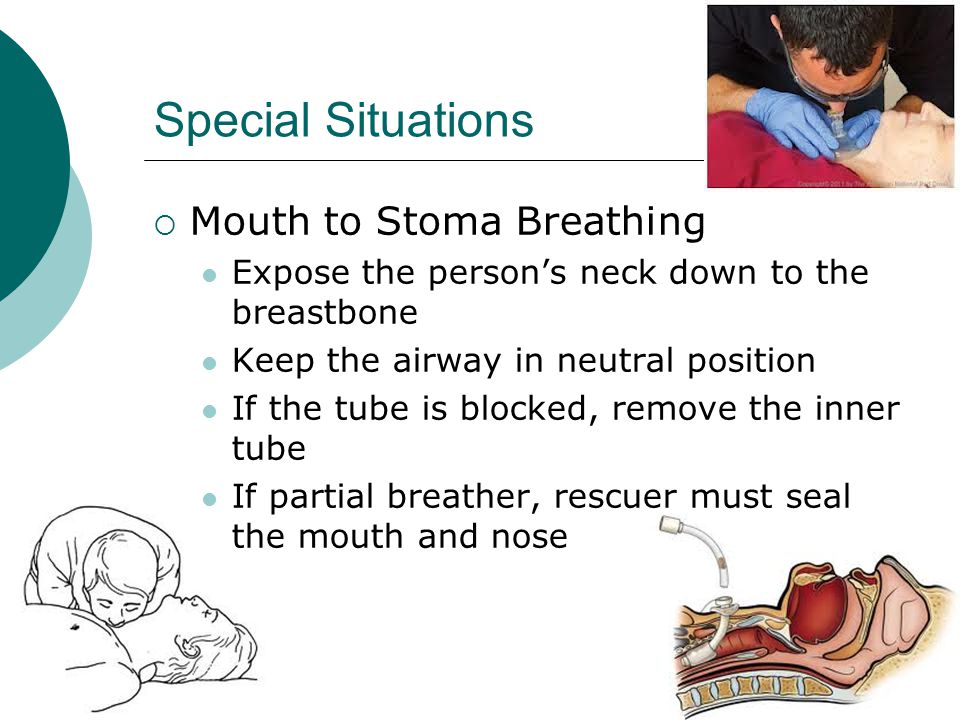
Before Giving Care And Checking An Ill Or Injured Person Ppt Video Online Download

Part 3 Adult Basic Life Support Circulation

Part 3 Adult Basic Life Support Circulation

Ppt Basic Life Support 1 Rescue Breaths Powerpoint Presentation Free Download Id 654452

Checking A Person Part 2 Remember Once You Have Called 911 You Should Always Check That The Unconscious Person Has An Open Airway Is Breathing Normally Ppt Video Online Download
![]()
After Laryngectomy Care Archives Labex Electrolarynxes

Chapter 4 To Maintain An Open Airway To Check Breathing Resuscitate If Required To Call 911 For Emergency Help Ppt Download
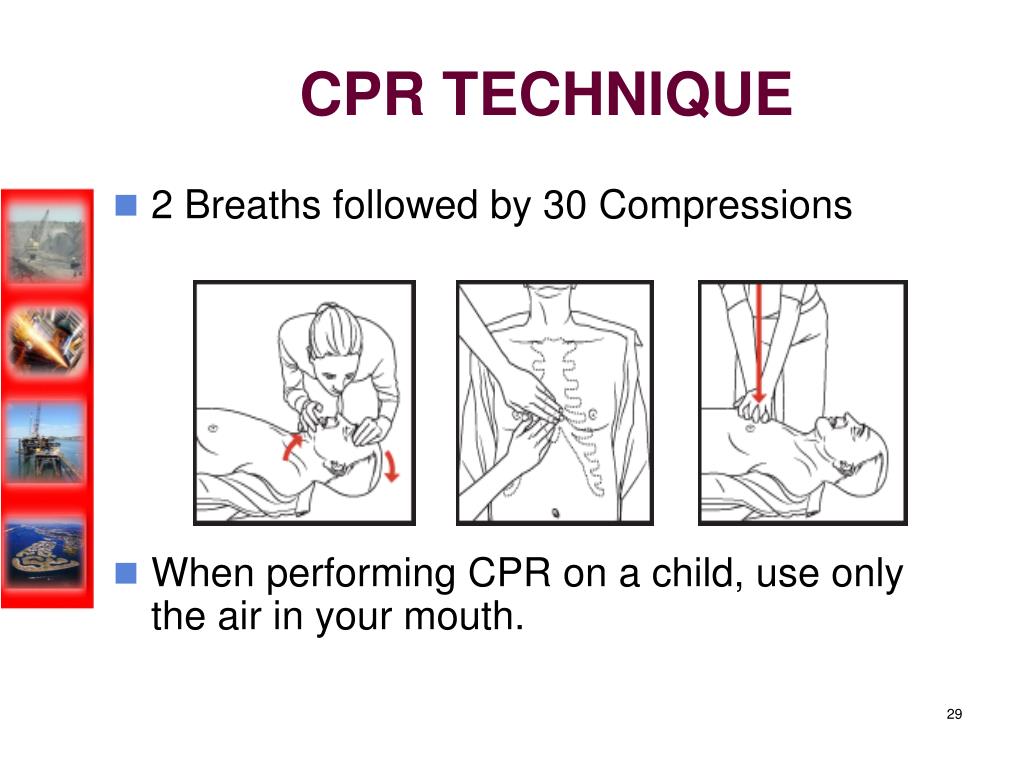
Ppt First Aid Training Powerpoint Presentation Free Download Id 3964850

Laryngectomee Patient Safety And Awareness Campaign First Aid World

Chapter 4 First Aid For Colleges And Universities

Emergency Cardiovascular Life Support Thoracic Key

Mouth To Stoma Ventilations Youtube
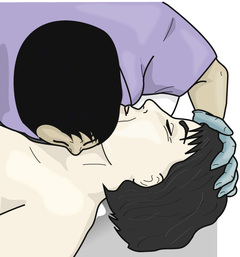
Basic Emergency Care Nurse Key

Basic Life Support با سلام علل متعددی وجود دارند که نیازمند احیا هستند از جمله می توان به ایست قلبی استروک ها احیا در بیماران دارای شوک علل متعددی Ppt Download
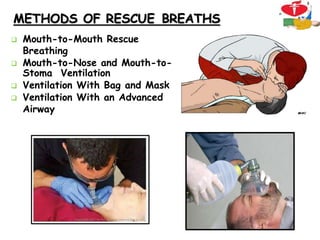

Comments
Post a Comment